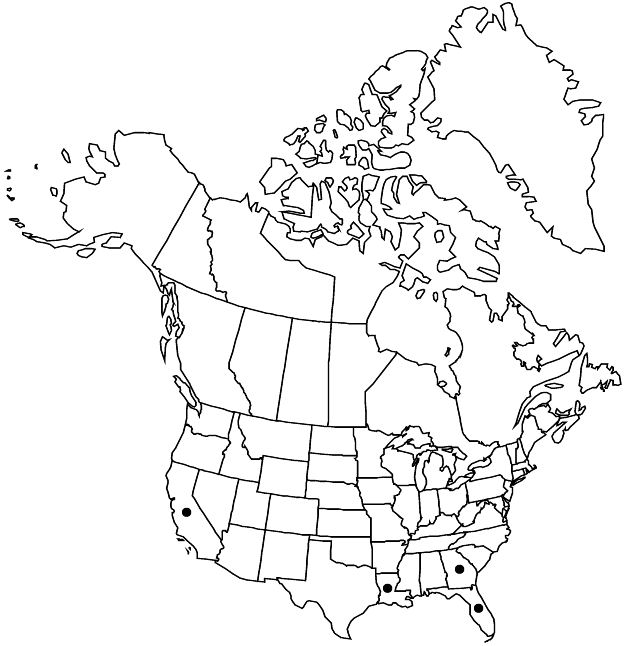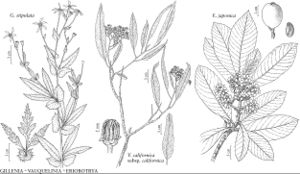Difference between revisions of "Eriobotrya japonica"
Trans. Linn. Soc. London 13: 102. 1821.
FNA>Volume Importer |
FNA>Volume Importer |
(No difference)
| |
Revision as of 20:38, 24 September 2019
Stems: bark ± smooth. Leaves: petiole 6–10 mm; blade margins dentate in distal 1/2, lateral veins 15–25 per side, apex acute. Inflorescences: branches stiff, densely rufous-tomentose, with 1–3 barely reduced leaflike bracts, flowers ± sessile; bracteoles deciduous, narrowly triangular, margins entire, rufous-tomentose. Flowers: sepals 3 × 3 mm; petals ± spreading, often notched, 8–10 mm. Pomes: flesh sweet. Seeds 3–5, black, ovoid, shiny. 2n = 34.
Phenology: Flowering spring.
Habitat: Redwood forests, suburban and urban woodlots
Elevation: 0–100 m
Distribution

Calif., Fla., Ga., La., Asia (China), introduced also in Mexico, West Indies, Central America, South America, Europe, n, s Africa, Pacific Islands (New Zealand), Australia.
Discussion
Naturalized plants of Eriobotrya japonica are only sporadically found in North America. The species is apparently native to east-central China (Gu C. and S. A. Spongberg 2003c), but it has long been cultivated and is now spontaneous in a much larger Asian area. The species is cultivated widely for its fruit in warm temperate and subtropical regions.
Selected References
None.
